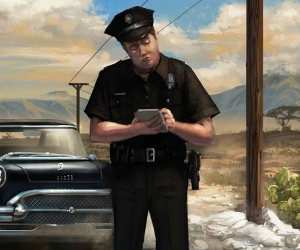|
Con il termine punta e clicca si intendono tutti quei giochi di avventura ed esplorazione dove lo sviluppo dello stesso avviene interagendo con l'ambientazione. Strumento unico (e indispensabile) di una qualsiasi azione è il mouse che facendo muovere il cursore in determinati punti interagibili del gioco (come oggetti, persone, luoghi) e la pressione dei tasti destro o sinistro, permette le più svariate azioni. Il personaggio che quindi abbiamo sotto il nostro controllo potrà usare oggetti combinandoli con altri, esaminare particolari dettagli di un ambiente, parlare con altri png del gioco, risolvere enigmi più o meno complessi.
Il termine non viene usato nei classici giochi sparatutto o similari compresi anche gli "Rpg", poichè in questi non ci si limita al solo interagire con l'ambiente, ma anche al compiere altre azioni come: sparare, acquisire punteggio al personaggio, molte volte combinati anche con l'uso della tastiera.
|
|
|

|
|
|
|
GIOCO: SCENE OF THE CRIME: DREAM OF MURDER
SOTTOGENERE: GIALLO
VOTO: 5 STELLE
|
|
|
LIST GAMES:
1) SCENE OF THE CRIME: DREAM OF MURDER
|
POINT and CLICK GAMES
Point and Clikc games are adventure games that contain a variety of puzzles, such as decoding messages, finding and using items, opening locked doors, or finding and exploring new locations. Solving a puzzle will unlock access to new areas in the game world, and reveal more of the game story. Logic puzzles, where mechanical devices are designed with abstract interfaces to test a player's deductive reasoning skills, are common.
Many adventure games make use of an inventory management screen as a distinct gameplay Players are only able to pick up some objects in the game, so the player usually knows that only objects that can be picked up are important. Because it can be difficult for a player to know if they missed an important item, they will often scour every scene for items. For games that utilize a point-and-click device, players will sometimes engage in a systematic search known as a pixel hunt. Games try to avoid this by highlighting the item, or by snapping the player's cursor to the item.
Many puzzles in these games involve gathering and using items from their inventory. Players must apply lateral thinking techniques where they apply real-world extrinsic knowledge about objects in unexpected ways. For example, by putting a deflated inner tube on a cactus to create a slingshot, which requires a player to realize that an inner tube is stretchyThey may need to carry items in their inventory for a long duration before they prove useful and thus it is normal for adventure games to test a player's memory where a challenge can only be overcome by recalling a piece of information from earlier in the game. There is seldom any time pressure for these puzzles, focusing more on the player's ability to reason than on quick-thinking.
| |
|